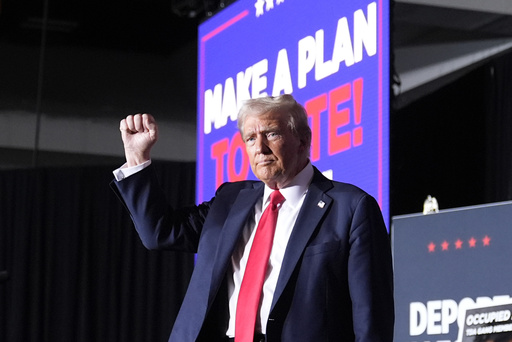
AURORA, Colo. — Starting seventh grade at her first American school was a daunting task for Alisson Ramirez, especially as she faced classrooms where all the instruction was delivered in English. The 13-year-old Venezuelan felt a sense of anxiety, fearing that peers would pose questions she couldn’t answer. “I was nervous that people would ask me things and I wouldn’t know how to answer,” she reflected, worrying about feeling embarrassed if she had to respond in Spanish.
However, her first experience at Aurora Public Schools in Colorado this August was unexpectedly reassuring. Many teachers took extra steps to accommodate her, translating key vocabulary into Spanish and providing written instructions in her native language. Some educators even proactively engaged with her using Spanish phrases like “terminado?” and “preguntas?” which translates to “Are you done?” and “Do you have questions?” One teacher even pledged to improve his Spanish skills to better assist Alisson.
Although the educational environment aimed to welcome Alisson, the overall situation in the city presented a stark contrast. While the school system embraces over 3,000 new migrant students, primarily from Venezuela and Colombia, the local government has adopted a more restrictive stance. City officials, including the City Council, have sought to deter Venezuelan immigrants from settling in Aurora by pledging no financial support for newcomers and are investigating nonprofits aiding the migrants.
This climate became further aggravated when the mayor made unfounded allegations about Venezuelan gangs overtaking an apartment complex, prompting remarks from former President Donald Trump, who painted Aurora as a “war zone” at his campaign rallies. He insinuated that immigrants were “poisoning” local schools and claimed many don’t speak English. Trump has made assurances that if he is re-elected, he will target Aurora for deportations.
The situation depicts the bewildering reality for new immigrants navigating the complexities of life in the United States, a nation often heralded for the “American dream,” yet rife with division and conflict. Many migrants arrive in search of better lives for their families but find themselves questioning the safety and suitability of their new environment for raising children.
Alisson’s family, navigating life in Aurora, often finds it challenging to identify which city services apply to them and which do not, as they frequently move between Aurora and nearby Denver looking for jobs and resources. Maria Angel Torres, Alisson’s mother, understands that while some organizations are eager to provide assistance, they also confront fear and suspicion from some community members. During a grocery store visit last spring, Torres experienced this directly when an American teenager told her to maintain distance in line, leading to a humiliating moment for Torres, who insists she poses no threat.
As fears surrounding the portrayal of Venezuelan immigrants grew, Torres worried that negative public perception could impact her family. They fled Venezuela primarily to escape violence and lawlessness, hoping this fresh start would be free from such dangers.
Torres also has an older daughter, Gabriela Ramirez, who relocated with her partner Ronexi Bocaranda. Bocaranda faced extortion in Venezuela, where he was compelled to pay government workers bribes disguised as “vacunas” or vaccines, costing him nearly half a week’s earnings. An altercation ensued when he refused to continue paying, resulting in a stabbing that left a visible scar. Following this incident, the family fled to Colombia, later embarking on a treacherous journey through the Darién Gap to ultimately seek refuge in the United States, where they will have to navigate the complexities of deportation hearings in 2025 as they request asylum based on threats against them in Venezuela.
Upon arriving in Aurora, Torres and her daughter endeavored to enroll their children in school, only to encounter confusion over vaccination requirements. The uncertainty around whether to accept vaccination records from Venezuela and Colombia or to procure new immunizations contributed to their children remaining home for months.
In a shift from three years prior, when fewer immigrant students faced the education system, Aurora schools have been inundated with students who do not speak English. Previously, teachers might have managed one or two newcomers but now, classes often contain up to ten immigrant students, complicating the learning environment. Marcella Garcia, the principal at Aurora Hills Middle School, noted that many new students felt isolated, unable to engage in conversations. As a response, schools adopted a practice known as “translanguaging” where teachers mix Spanish with English to help students connect with the material.
While it’s still too early to assess its effectiveness, Alisson personally found this approach comforting. Her social studies teacher, Jake Emerson, initially taught strictly in English, prompting her to engage actively. By mid-September, Alisson sat with her friends, using both languages to navigate class discussions. This collaborative atmosphere demonstrated a willingness among classmates to support each other’s learning journey.
Despite the positive adjustments made within the school system, challenges persisted. Instances of bullying from other students surfaced, leaving Alisson feeling vulnerable and conflicted regarding the school’s assertions of a zero-tolerance policy for harassment. However, she remained resilient and continued to pursue her studies. Afterward, she participated in a specialized class aimed at linguistically diverse education, where the teacher employed Google Translate for instructions, catering to the diverse linguistic backgrounds present.
Tensions surrounding safety grew as rumors of bomb threats spread through schools across the state, leaving Torres and Alisson feeling anxious, though no evidence substantiated these claims. Despite her concerns about the American educational environment, Torres wrestled with the choices she faced concerning her children’s education. The fear and uncertainty reflect a poignant reality of the immigrant experience in the U.S., particularly for those fleeing danger and seeking a place to thrive.
Amidst political and social strife, Alisson and Torres strive to carve out a sense of normalcy in their lives, hoping to navigate a system that seems increasingly complicated and alien. Torres expressed disbelief that such threats against children could even arise in the U.S., highlighting the contrasting realities between Venezuela and their new home.
